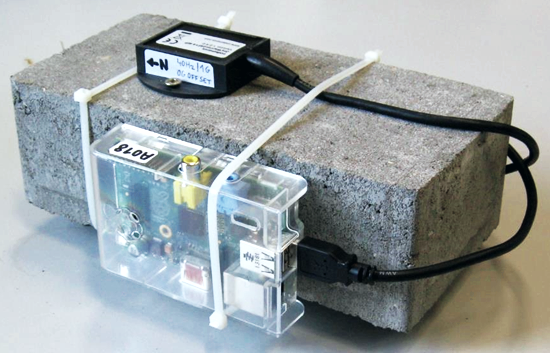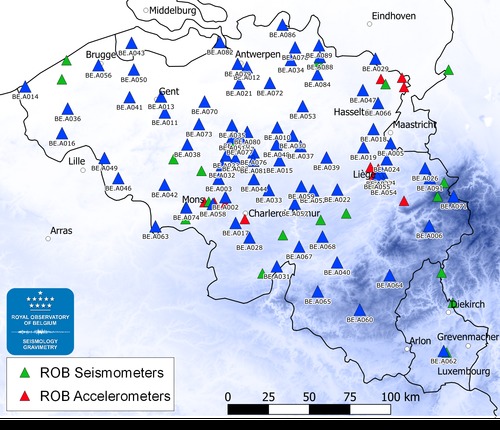About the AcceleROB Project
The AcceleROB project aims at deploying 90 low-cost accelerometric stations in Belgium in order to measure the real ground motion whenever a larger-than-usual earthquake will strike. "AcceleROB" is an acronym for "Accelerometric station of the Royal Observatory of Belgium" (Seismology-Gravimetry service). A complete AcceleROB includes: a RaspberryPi microcomputer, a power supply, a network cable, a JoyWarrior Accelerometer and a tripod brick. This setup allows installing the sensor in basements without the need to leave a computer permanently switched on. The station is low-consumption: less than 3 Watts (7 W with the Devolo) and low-bandwidth: around 365 bytes per second (30MB/day)!


